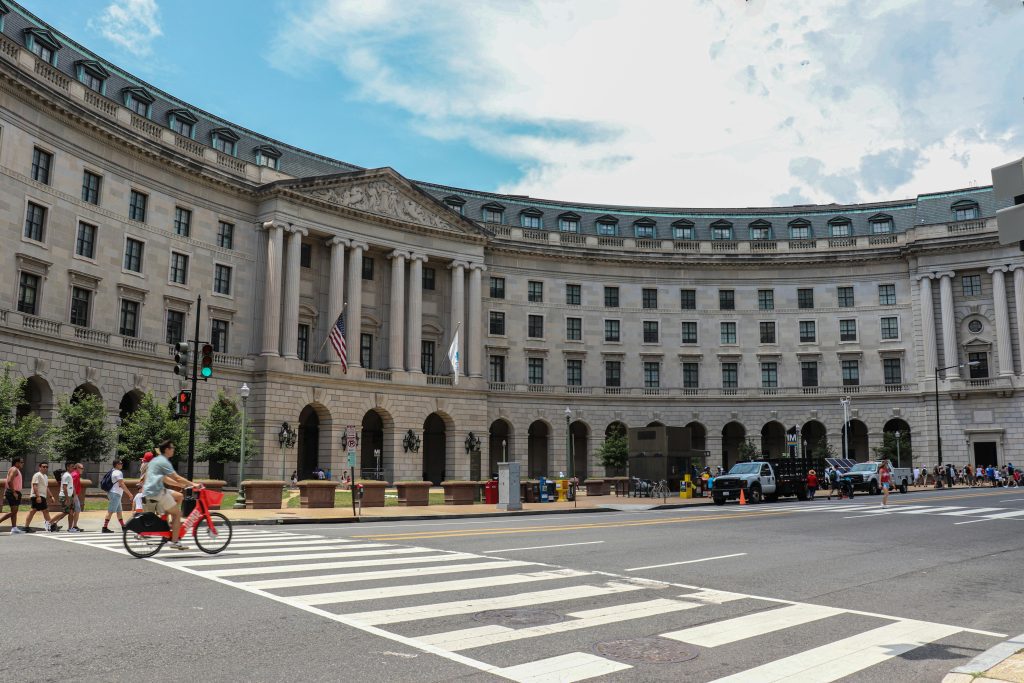How McDowell County, West Virginia, is Addressing its Decades-old Water Problems
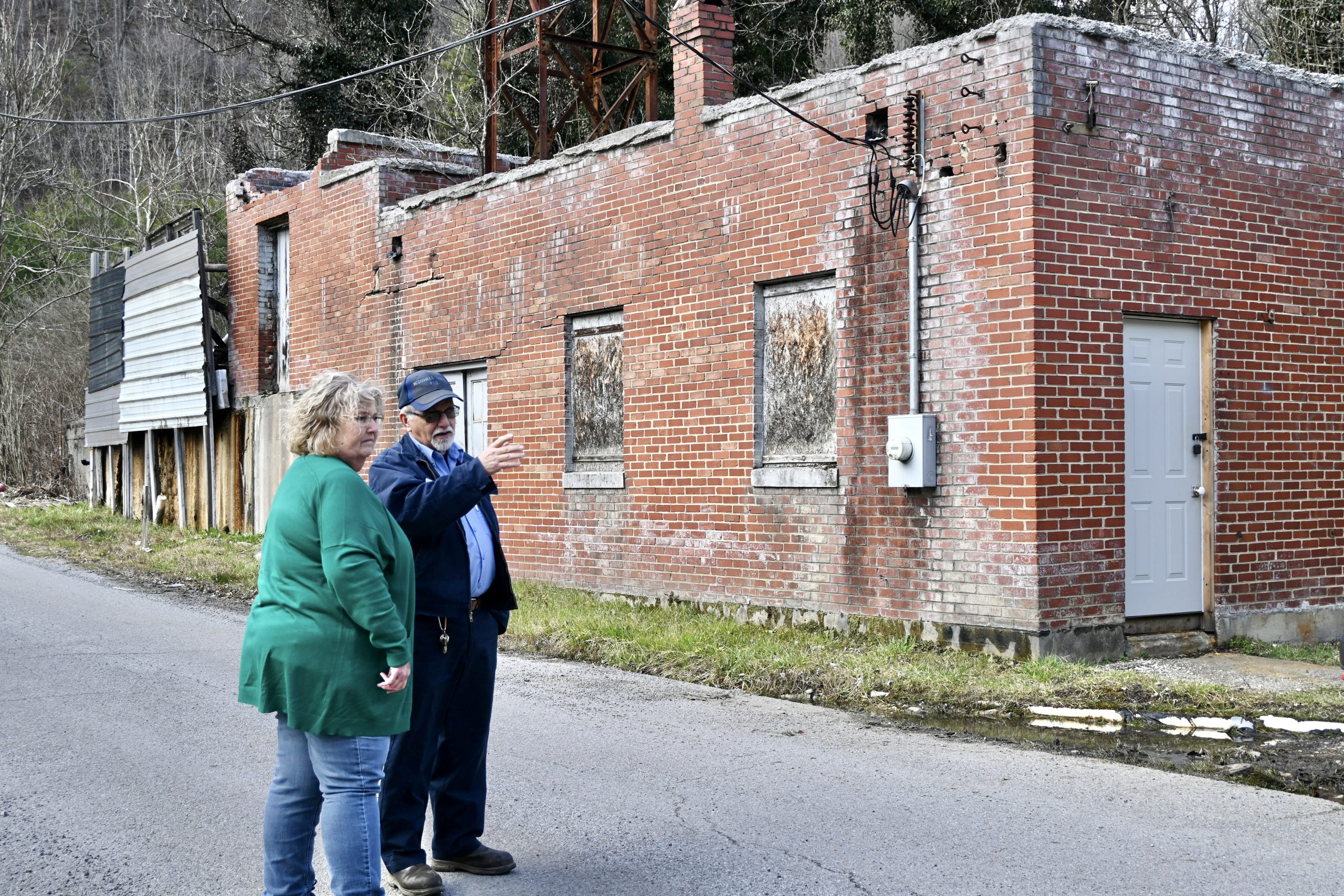
Mavis Brewster, general manager of McDowell County Public Service Department, and MCPSD Field Supervisor Randy Whitaker discuss how to fix a drainage problem on the road beside the Kimball Water Plant. The dilapidated condition of the plant makes it a high priority for the department to replace. Photo by Lorelei Goff
By Lorelei Goff
Donna Dickson’s home sits perched on the mountainside along a winding stretch of Highway 52 in McDowell County, West Virginia. The area is best known as coal country, where generations of stalwart miners harvested the black rock that heated the United States’ homes, fueled its industrial revolution and westward expansion, and powered allied ships during the second world war.
The area abounds with water. Water flows from rivers and creeks and bursts from roadside springs.
Ironically, it hasn’t always flowed as freely from faucets inside homes along this stretch of highway.
“We always had good water up here, you know, just sometimes we had a lot of problems with the pumps blowing out and stuff like that,” Dickson says. “We just didn’t know when the water was gonna go off on us.”
Dickson’s predicament was a snapshot of a much larger problem that has plagued the county for decades.
During the industry’s heyday, coal companies built towns to house miners and their families. That included installing and maintaining pumps, tanks and pipes to convey water into homes. When the companies left, the already-aging water systems were abandoned, handed over to town governments that lacked the money and staff to maintain them, or sold to private water companies that didn’t invest back into them.
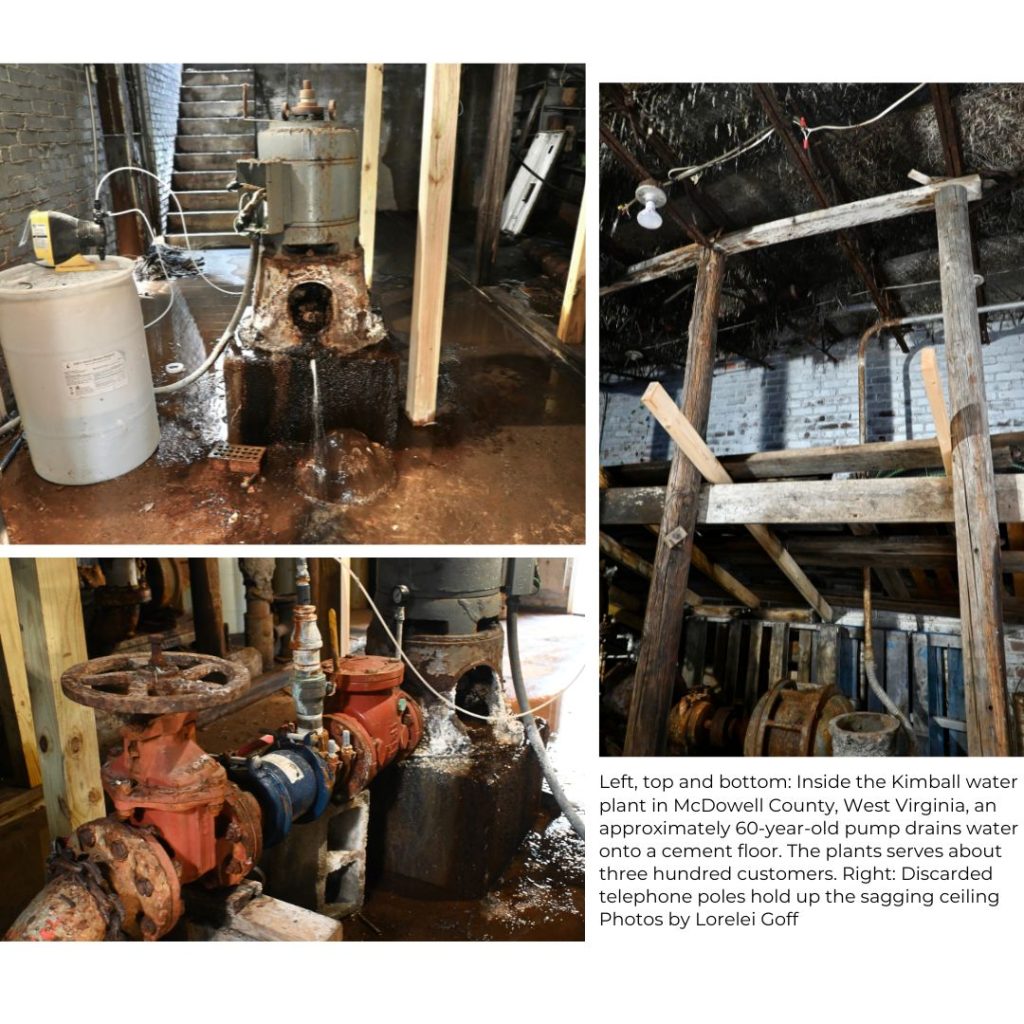
Pumps failed. Tanks rotted. Pipes disintegrated. Residents resorted to hauling water from springs and creeks.
In 1990, the McDowell County Public Service Department formed and began acquiring and updating the failing systems. The utility employs 17 people and serves about 3,500 customers through 16 different water systems.
When the department acquired the system that served Highway 52 from a private company in 2006, water outages were frequent and lasted for days. Maps of the county’s pipelines had been destroyed by a flood, making the task of finding and fixing the leaks difficult and, sometimes, impossible.
“We started immediately applying for funding to replace all of it,” says MCPSD General Manager Mavis Brewster.
The funding for the Highway 52 area fell under phase two of the MCPSD’s Elkhorn Water project, completed in December 2021. The project cost $6.3 million. Funding included grants in the amount of $50,000 from the McDowell County Commission, $50,000 from the McDowell County Economic Development Association, $1.2 million from the USDA’s Rural Utilities Service, $1.8 million from the Appalachian Regional Commission, $1.5 million from the U.S. Department of Housing and Urban Development: Small Cities Block Grant program, and $1.75 million from the U.S. Economic Development Administration.
Having to cobble together funding from so many agencies takes time and can get complicated, but according to Brewster, the MCPSD is committed to completing future projects without additional loans, which would raise rates for customers.
“Right now we have 18 different loans with USDA,” she adds. “So every month, with a very limited revenue stream, we’re paying around $34,000 in just loan debt.”
Phases one and two of the Elkhorn Water Project replaced three aging systems and included the communities of Upland, Powhatan and Kyle, moving 112 households onto a new water plant at Maybeury. The project also replaced systems operated by the town of Northfork and the city of Keystone — which had been under a boil water notice for 10 years until the completion of phase two — that serve about 264 households.
But the funding only paid for the mainlines to be laid. The grants can’t be used for lateral lines to connect homes to the mainlines and customers can incur additional costs during construction.
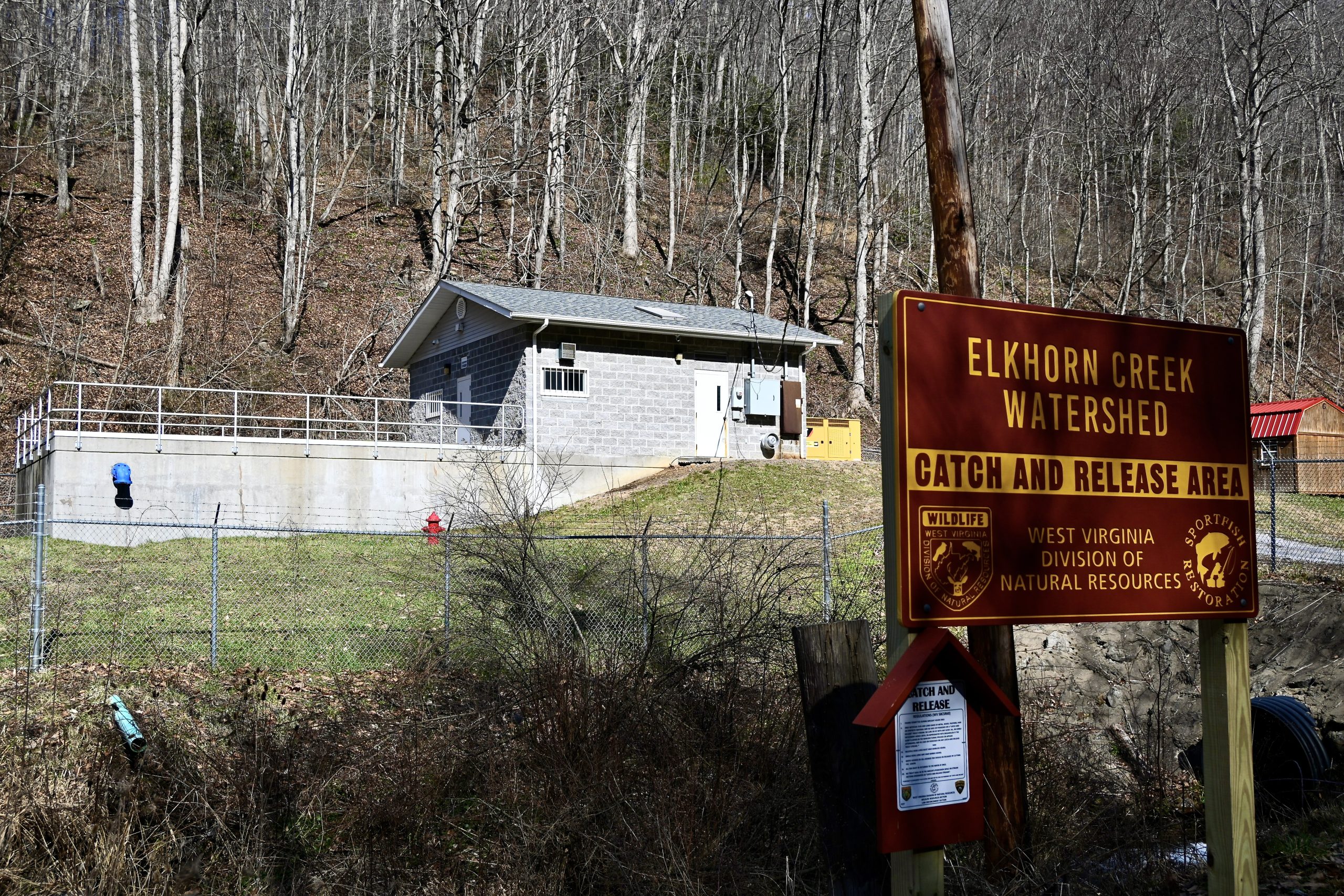
This water treatment building is one of two buildings constructed during phase two of the McDowell County Public Service Department’s Elkhorn Water project. The project was completed in December 2021, at a cost of $6.3 million. Photo by Lorelei Goff
When MCPSD receives funding to construct a new project, those funds can be used to install meter setters and meters for existing customers. If residents sign for service before the construction passes their homes, they are not required to pay a $300 tap fee. If they refuse service and then later decide to connect, they then have to pay the tap fee.
Many residents can’t afford to connect their homes.
Appalachian Water Project
That’s where an innovative nonprofit organization stepped in to assist. DigDeep develops and funds community-led projects to bring clean water into American homes. Current projects include the Navajo Water Project in New Mexico, the Colonias Water Project in Texas and the Appalachia Water Project in West Virginia.
DigDeep hired local talent to take the helm of its Appalachia Water Project, which has connected more than 300 households in West Virginia to water so far, many in collaboration with MCPSD, with more projects planned.
When DigDeep approached Brewster about assisting with water projects, she suggested replacing the 30- to 40-year-old lateral lines. When old lines are connected to new mains, the increase in pressure causes the lines to blow, leaving the customer without water and resulting in water loss to the department.
Brewster calls it a good partnership. MCPSD Field Supervisor Randy Whittaker agrees.
“We’re close knit, and everybody knows everybody,” Whittaker says.
The partnership bridged much of the gap between MCPSD’s funding limitations and residents’ needs.
Dickson could not have afforded to hire a contractor to install the connector line to her home and she is grateful to MCPSD and DigDeep.
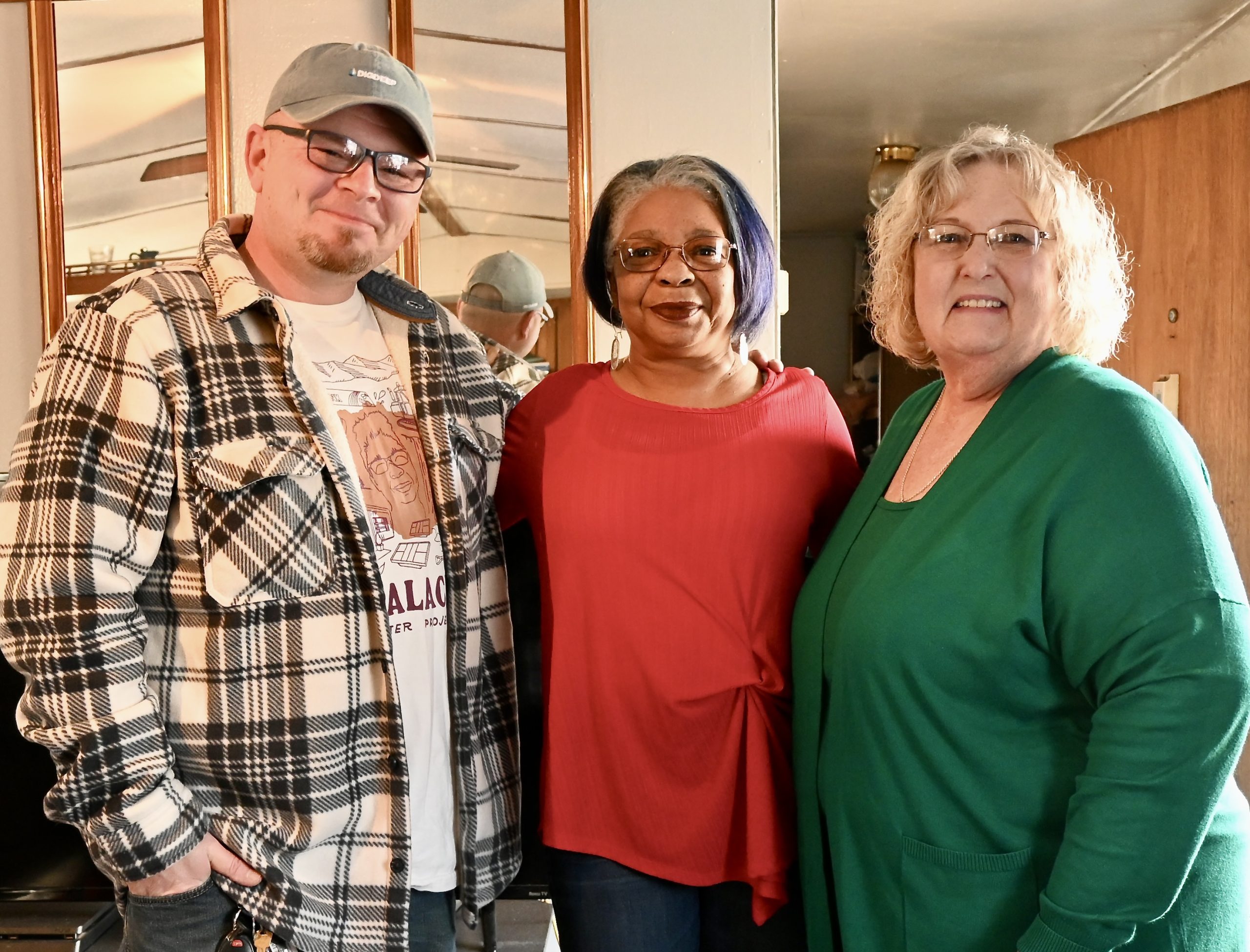
Donna Dickson, center, stands between Edward George, communications coordinator for the nonprofit DigDeep, and Mavis Brewster, general manager of McDowell County Public Service Department. Dickson’s home frequently lost water until efforts by both organizations connected it to MCPSD’s expanded service. Photo by Lorelei Goff
“When you get up in the morning, turn the water on, wash,” Dickson says. “No boil orders. No advisories. It’s just the way it should be.”
DigDeep’s community relations coordinator for the Appalachia Water Project, Edward George, is quick to point out that success depends on local partnerships. He also credits those partnerships with helping AWP to expand its reach.
“We’re moving into Eastern Kentucky,” George says, adding, “We’re getting ready to get a new centralized hub in Bloomfield. We’ll actively be looking in all the surrounding states and Appalachia.”
Both organizations will continue collaborating on multiple projects in McDowell County. An additional 600 to 800 homes that still lack adequate water can feasibly be connected to mainlines, according to Brewster. Funding for the projects is at various stages.
Upcoming projects
The Elkhorn Water Phase Three project is fully funded and in the design stage. It will include construction of a new water treatment plant and installation of new mains, fire hydrants, service connections and meters for 280 customers.
Funding for the estimated $7.5 million project includes grants in the amount of $5.8 million from the U.S. Economic Development Administration, $856,500 from West Virginia Infrastructure and Jobs Development Council District 3, and $856,500 from the West Virginia Drinking Water Treatment Revolving Fund.
The public service department has applied for nearly $17 million in additional funding for four separate projects to extend water lines, upgrade a water treatment plant and replace another water system.
Additional projects have been proposed for the Caretta and Yukon communities, as well as a Clean Streams Sewer Study for Elkhorn.

Black and white pipes carry household sewage from homes into a creek. These homes were built so close together there is no room to install septic systems. McDowell County Public Service Department is working to connect homes in the county to public sewer. Photo by Lorelei Goff
“We also have a sewer project [in the Keystone and Northfork areas] that we just received $75,000 for a [preliminary engineering report] search grant from USDA, but it’s all working with the Closing America’s Wastewater Access Gap program from the EPA,” Brewster says.
McDowell County is one of 11 communities included in the Closing America’s Wastewater Access Gap Community Initiative pilot, a joint project of the The U.S. Environmental Protection Agency and U.S. Department of Agriculture. The pilot program doesn’t provide funding for construction or engineering, Brewster explains, but it funds assessments of a project area — in this case, the towns of Northfork and Keystone — organizes public meetings to receive residents input, and brings several other agencies together for brainstorming. The program provides a solutions plan that can be used as reference for the future project.
The EPA provides funding for many of the programs MCPSD has received grants from. The 2024 fiscal budget reduced the EPA’s budget, but funding for its Clean Water and Clean Drinking Water State Revolving Funds, which received a huge boost in the Bipartisan Infrastructure Law, remained at 2023 levels.

Environmental Protection Agency Regional Administrator Adam Ortiz and West Virginia Department of Environmental Protection Director Kathy Emery, center holding scissors, attended a ribbon cutting ceremony for the Coalwood Sewer Project. The project replaced straight pipes that discharged household sewage into creeks in Coalwood, West Virginia. Photo courtesy of MCPSD
The U.S. Economic Development Administration received $400 million in 2024, a decrease of $30 million from the 2023 budget, and the USDA’s Rural Utilities Service funding level received a minor decrease.
However, the MCPSD faces another ongoing challenge. Floods have devastated the county over the years. Much of the property that could be used for building water or sewer plants is located in the floodplain where no funding would be granted.
Innovative solutions
Even with the best efforts of MCPSD and the Appalachia Water Project, not every home in McDowell County can be reached by piped water due to the terrain and the high cost to serve very few customers. One booster station to pump water to a few homes on a mountaintop, for example, would cost $200,000 to $300,000, in addition to the cost of running lines.
For those outside the reach of piped water, other options are being considered and developed. AWP, for example, installed a pilot rain catchment project on one home.
Tonda and Buril Lowe live on Atwell Mountain. They have a well, but can’t use it due to a strong sulfur odor.
“The water here is hard water for one thing,” Buril Lowe says. “And when they were doing all the mining stuff that made it even worse.”
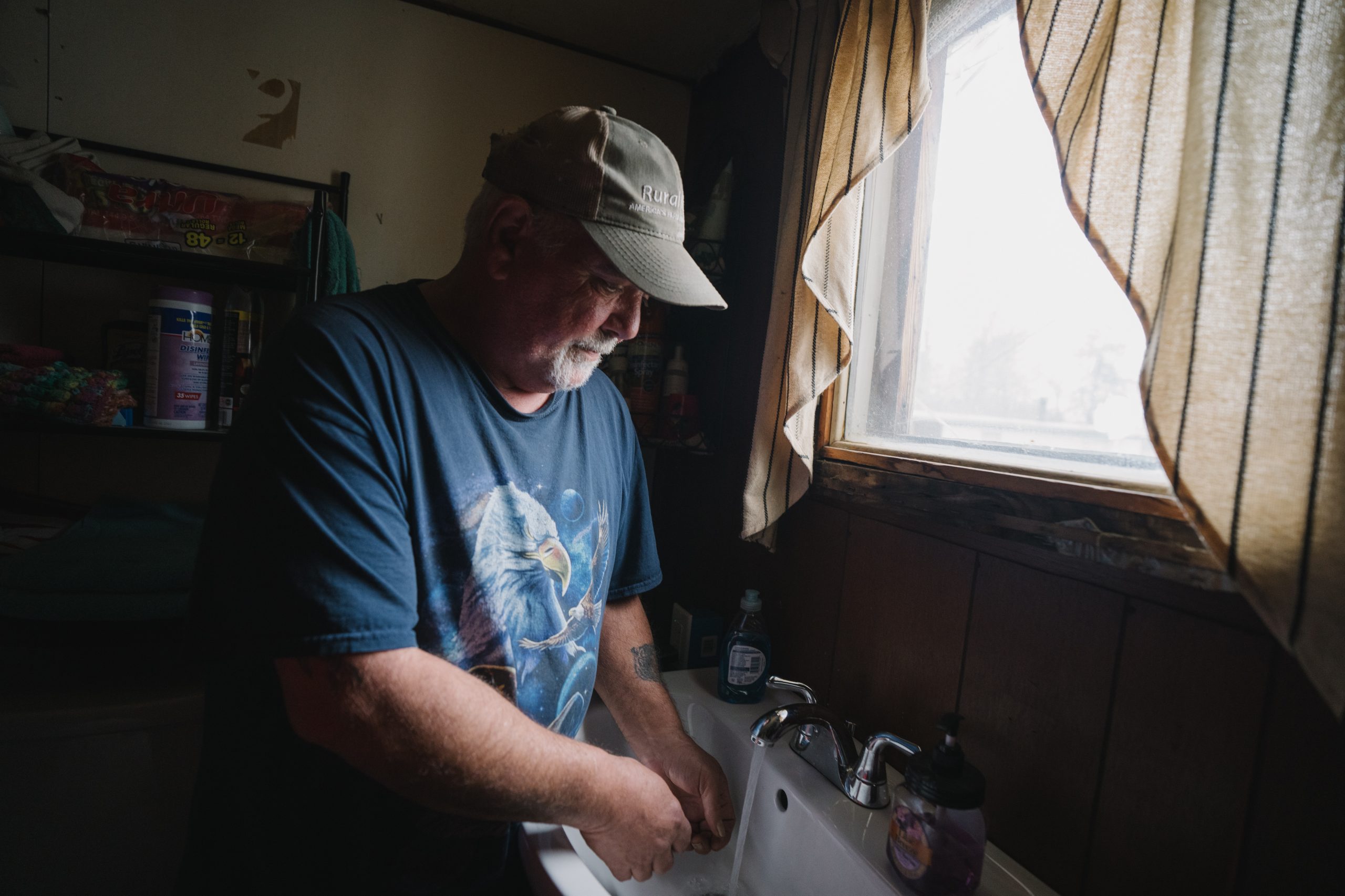
Buril Lowe turns on the faucet in his home. Buril and his wife Tonda live on Atwell Mountain in McDowell County, West Virginia, where the water in their well is unusable. The nonprofit DigDeep installed a rain catchment system to their home to provide clean, running water. Photo courtesy of DigDeep
It also frequently runs too low to use.
George found out about their problem from Brewster, and the DigDeep team came up with a rooftop rainwater catchment solution.
“It’s something that people have been using for centuries, really,” says Abby Bradshaw, AWP’s field engineer. “But up here we basically just bring the rainwater into two tanks through the gutters and then that gets filtered. … The water is then pumped into the house and it’s stored in a pressure tank where it’s pressurized. And that allows you to use the water without the pump having to turn on every time. Then it goes through two-stage filtration, as well as a UV LED system. And then it goes into water heaters and into the home.”
The team drew some inspiration from systems installed in DigDeep’s Navajo Water Project, and a few members of the Navajo team traveled to McDowell County to collaborate on the project.
The simple system, which Buril Lowe says he wouldn’t have had the money to install himself, has had a profound effect on their lives. Tonda Lowe’s days used to revolve around water.
“I’d go outside and carry water and heat it up on the stove to do dishes,” she says. “Have to carry it to fill up a bathtub, and heat that water up to take a bath. It wasn’t easy.”
Buril Lowe loves that he can take a shower in his own home now.
Merle and Darlene Pruett are next in line to receive a water catchment system through the Appalachia Water Project. They can no longer use their well on Atwell Mountain.
“The problem that we have here is there’s so many underground mines underneath a well,” Merle Pruett says. “It doesn’t last but two or three years and the bottom falls out and the water goes away.”
“Water-wise, right now I’m doing okay. I have a natural spring,” he says, adding, “I really need a septic tank worse than I do water.”
But while the spring water works for washing, they buy bottled water to drink.
“I’m not a big fan of the spring,” Darlene Pruett says.
She adds, “The water just does not taste good and I am scared to death to drink it. That’s the reason I cook with bottled water and we drink [bottled] water.”
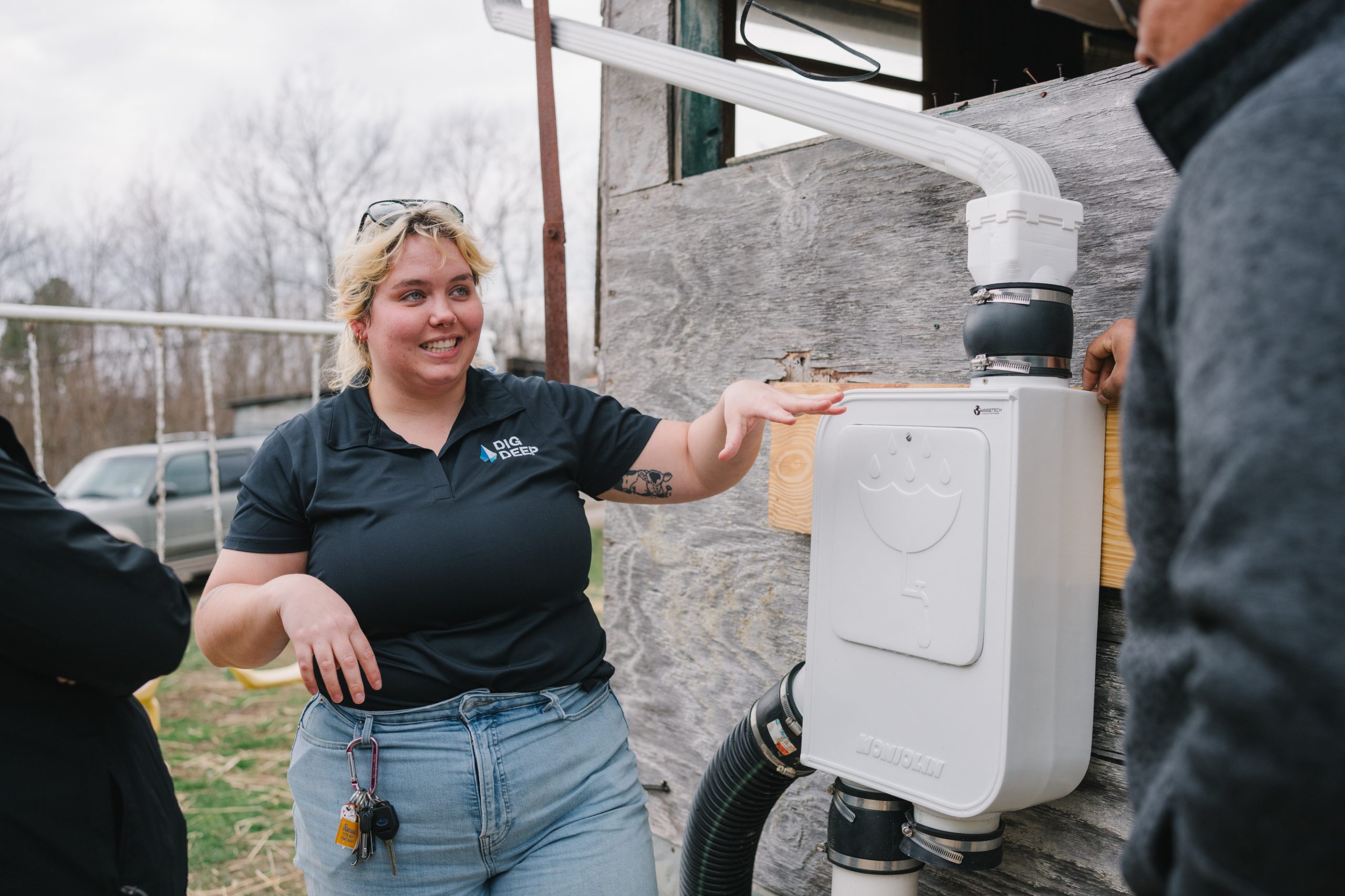
Abby Bradshaw, field engineer for the nonprofit DigDeep, explains how the phase one filter on a rain catchment system works. The system was the first the organization installed in McDowell County, West Virginia. Photo courtesy of DigDeep
Particles in the water quickly clog filters on the spring pumps, making it impractical to filter it for drinking, and the bleach used to disinfect the water in the tank leaves an unpleasant taste. The springs also run low and occasionally dry up when there’s not enough rain.
The problem with using bottled water, according to Leigh-Anne Krometis, an associate professor at Virginia Tech who conducts studies on drinking water and spring water in the region, is the expense.
“That can cost eight to 25% of the household’s income,” says Krometis, who describes the amount as insane.
Besides rain catchment, Krometis suggests another alternative to well and spring water for homes that can’t be reached by piped water systems.
“I actually believe that there might even be places where water delivery makes sense,” Krometis says. “It costs less to build a cistern and deliver water weekly in a tanker truck than it would to run a pipe.”
While there are still many people not yet reached, MCPSD and AWP have pledged to get water to as many homes as possible.
“Everyone deserves to have water,” Bradshaw says, adding, “We’re not superheroes or anything, we’re not solving the whole problem. But if we can bring a solution to at least a couple people one day at a time, it’s pretty nice.”
“It’s a challenge, but you know, we’re working on it,” says Brewster. “We’ll get there. It’s just a matter of time.”
Related Articles
Latest News

Leave a comment
Your email address will not be published. Required fields are marked *



